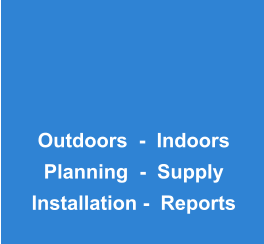





© Linetop Ltd 2021









INDOORS PEOPLE COUNTERS
This page shows examples of visitor counters inside buildings. Generally visitors will be counted both entering and leaving through a doorway. If there is more than one external door then all their counts can be added and halved to calculate the total building footfall since everyone is counted twice somewhere. Sometimes internal doors are also monitored to determine the relative attractiveness of various areas like exhibits or a cafe. Some buildings have office PCs running all day, e.g. a Tourist Information Centre (TIC) may provide a hotel room booking service which needs a PC to be on. In such cases it is possible to transmit sensor data wirelessly into the nearest PC which saves it to a network drive making it immediately accessible to colleagues. In other cases, without a PC, the data is stored in a data logger memory cube to be downloaded occasionally as is done with outdoors counters. The banner photo shows an external door that unfortunately swings inwards only. The break-beam sensor here was therefore fitted in the gaps between the glass door and the wooden shutters and linked to a local PC by cable.



Countryside centre
The Forestry Commission, Local Authorities and National Parks often run visitor centres. Counting cars is an obvious approach, but not everyone arriving at the site will make use of the building while others may use it more than once during their visit. Doors that open outwards, as in the photo above, and sliding doors both suit a break-beam’sensor placed close by on the inside walls. Sometimes a lobby area between outer and inner doors can be spanned by an optical beam. Security is rarely an issue since typical buildings are supervised during the day and locked by night.Unstaffed exhibition or
bird-hide style building
Security is then more of an issue, so covertness is often important. When the door opens inwards, as in the photo above, then an optical or body heat sensor built into the door frame externally may be practical. The wiring comes back indoors into a secure or hidden data logger box (yellow arrow). It will improve accuracy if the door is propped open during business hours so as to make people traffic more fluid. But it will still work even if people have to push the door to enter provided that the sensor is so close to the door and in the plane of the door that it does not see people while approaching it.Museum and gallery
Variety amongst external doors is immense so each door needs to be considered a special case. The photo shows a glass-sided semi-circular doorway where the sensor spans the semi-circular part, but not the double doors which unhelpfully swing inwards. Rotating doors are even more of a challenge - clearly a break-beam where people exit the ‘roundabout’ will work, but we have also used pressure sensor mats too inside such doors. Automatic doors are operated with optical sensors (sometimes radar) and care is needed so that the door and counter sensors do not interfere.



Public libraries and TICs
Book loan data can be useful, but not all library users borrow a book. They might return some, they might borrow several books, read a newspaper or use the internet, and the book data might not be amenable to analysis by date, weekday, hour of day, trends, patterns etc, unlike logger data is. Libraries and Tourist Information Centres (TICs) are similar to countryside centres when devising visitor counters at their main doors. Automatic doors opening outwards are a blessing as an optical sensor can be positioned inside the building, ideally very close to the door frame.Retail and cafe areas
The front door is frequently the main target but one might also want to track visitor movements within inner areas. Till sales data is useful too, and more so the ‘conversion ratio’ of shop footfall to sales transactions along with the average spend per visitor and the trends for both of these metrics. If the shop is at a countryside visitor centre then clearly the ratio of the car arrivals to shop footfall is a key metric. Muliply cars by 2 to get a passenger estimate. At historic monuments, the shop is where visitors go on to buy a ticket - or perhaps not. Thus the shop footfall to ticket sale ratio is of interest.Public toilets
Toilets in the countryside are often of interest to Local Authorities and to the National Parks which fund them. A survey by one rural council found that usage varied from a dozen people per week in a tiny village to thousands in a touristic town near to a railway station and shops. Their aim was shut a third of them and upgrade facilities at the surviving sites. They also started charging 20p on the basis of their visitor counter results at their busiest site, photo above, which pays for an attendant during the summer months. The usual sensor approach is a body heat sensor in a box fixed above a door lintel provided that the door does not swing directly underneath it.



VISITOR COUNTERS







